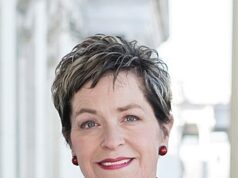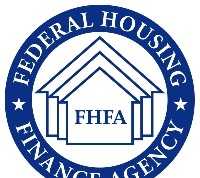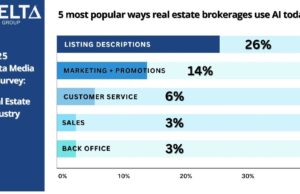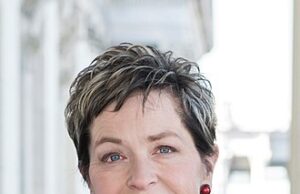Square Footage of LEED-Certified Existing Buildings Surpasses New Construction
Uptake signals green building market sea change
Washington, DC – December 8, 2011 – (RealEstateRama) — LEED-certified existing buildings are outpacing their newly built counterparts, according to the U.S. Green Building Council (USGBC). As of this month, square footage of LEED-certified existing buildings surpassed LEED-certified new construction by 15 million square feet on a cumulative basis.
“The U.S. is home to more than 60 billion square feet of existing commercial buildings, and we know that most of those buildings are energy guzzlers and water sieves,” said Rick Fedrizzi, President, CEO & Founding Chair, USGBC. “Greening these buildings takes hands-on work, creating precious jobs especially for construction workers. Making these existing buildings energy and water efficient has an enormous positive impact on the building’s cost of operations. And the indoor air quality improvements that go with less toxic cleaning solutions and better filtration create healthier places to live, work and learn.”
Historically, USGBC has seen the stock of LEED-certified green projects overwhelmingly made up of new construction projects, both in volume and square footage. That began to change in 2008, when the LEED for Existing Buildings: Operations & Maintenance (O&M) program began experiencing explosive growth.
In 2009, projects certified under LEED for Existing Buildings: O&M surpassed those certified under its new construction counterpart on an annual basis, a trend that continued in 2010 and 2011.
“This new data marks the first time that LEED-certified existing buildings have surpassed LEED-certified new construction cumulatively,” Fedrizzi continued. “The market is becoming increasingly aware of how building owners can get better performance through green operations and maintenance, and tools such as LEED for Existing Buildings: O&M are essential to cost-effectively driving improvements in our economy and environment. LEED as a rating system is continuing to evolve an ever greater emphasis on performance, not only in energy, but also water, location, indoor environmental quality, and materials.”
Projects worldwide are proving that green building doesn’t have to mean building new. By undertaking a large renovation, the recently LEED-certified Empire State Building has predicted it will slash energy consumption by more than 38 percent, saving $4.4 million in energy costs annually, and recouping the costs of implementation in only three years.
The second tallest building in the world, Taipei 101, earned the tallest honor – LEED Platinum. The skyscraper was designed to use 30 percent less energy, reducing annual utility costs by $700,000 a year.
San Francisco’s Transamerica Pyramid also earned LEED Platinum as an existing building, 39 years after it was originally built. The landmark’s onsite co-generation plant saves an average of $700,000 annually in energy costs.
USGBC is also a strong supporter and working to implement the White House’s Better Buildings Initiative to make America’s commercial buildings more energy- and resource-efficient over the next decade. The plan catalyzes private-sector investment through a series of incentives to upgrade existing offices, stores, schools and universities, hospitals and other commercial and municipal buildings.
A newly issued report by Capital-E found that efficiency financing has the potential to soar from $20 to $150 billion annually, creating over one million jobs, making the American economy more competitive, enhancing national security, and helping slow the impacts of climate change.
In their Green Outlook 2011 report, McGraw Hill Construction found that by 2015, the green share of the largest commercial retrofit and renovation activity will more than triple, growing to 25 percent to 33 percent of the activity by value—a $14 to $18 billion opportunity in major construction projects alone.
To learn more about existing buildings, visit usgbc.org/LEED/EB
About U.S. Green Building Council (USGBC)
The U.S. Green Building Council (USGBC) is committed to a prosperous and sustainable future for our nation through cost-efficient and energy-saving green buildings. With a community comprising 79 local affiliates, nearly 16,000 member organizations, and more than 174,000 LEED Professional Credential holders, USGBC is the driving force of an industry that is projected to contribute $554 billion to the U.S.
GDP from 2009-2013. USGBC leads an unlikely diverse constituency of builders and environmentalists, corporations and nonprofit organizations, elected officials and concerned citizens, and teachers and students. For more information, visit usgbc.org, Twitter, Facebook and LinkedIn.
LEED
The USGBC’s LEED green building certification system is the foremost program for the design, construction and operation of green buildings. Over 43,000 projects are currently participating in the commercial and institutional LEED rating systems, comprising nearly 8 billion square feet of construction space in all 50 states and 120 countries. In addition, nearly 15,000 homes have been certified under the LEED for Homes rating system, with more than 65,000 more homes registered.
By using less energy, LEED-certified buildings save money for families, businesses and taxpayers; reduce greenhouse gas emissions; and contribute to a healthier environment for residents, workers and the larger community. Learn more at usgbc.org.
Contact:
Ashley Katz
Communications Manager, USGBC
202.742.3738


















